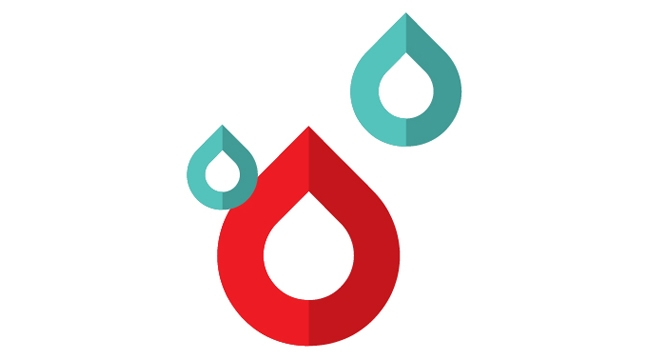Everything you need to know about donating plasma: A guide for first-timers

Looking to book that first appointment? Great! We’re here for your questions (including ‘what the heck is plasma?’).
Are you thinking about giving back to your community by donating plasma? It is an incredibly meaningful way to help others.
To ensure you have a good experience as a first-time plasma donor, we’ve created this comprehensive guide. Keep reading to learn what plasma is, how plasma donation works, and how plasma helps patients.

What is plasma?
Plasma is one of the vital parts of your blood. It supports your immune system, helps control excessive bleeding, and helps other blood components circulate through the body; it is also responsible for transporting important antibodies. Plasma is rich in various proteins, hormones and nutrients that protect your body from illness as well as infection.
Facts about plasma
- More than half (55 per cent) of your blood is plasma.
- Plasma is used for transfusion. Plasma transfusions are often used in urgent situations to help treat conditions like liver failure, severe infection and excessive bleeding.
- Plasma is also used to make different medications, such as immunoglobulins. Thousands of people rely on these medications for treatment of life-threatening conditions. Most of the plasma Canadian Blood Services collects is used for this purpose.
- The need for plasma is growing. There is a global shortage of immunoglobulins and the plasma needed to make them. That’s why Canadian Blood Services is opening new plasma donor centres and collecting more plasma.

Who can donate plasma?
To donate blood, plasma or platelets, you must be 17 years of age or older and weigh at least 110 pounds.
Most people are eligible to donate, but there are a few things that could make you ineligible. For example, if you have had a tattoo in the past three months, or have been pregnant in the past six months, you will have to postpone donating. There are also some differences in the criteria between donor programs. Even if you can’t donate blood or platelets, you may still be able to donate plasma.
Bottom line? Before booking to donate plasma for the first time, take a few minutes to do our eligibility quiz. You can also read about all eligibility requirements on our eligibility page.
Booking your plasma donation appointment
The next step is finding a plasma donation centre near you. From there, you can book on our website or by using the GiveBlood app. In many locations, you can even book a same-day appointment.
Things to prepare before your plasma donation appointment
One of the best ways to prepare for your plasma donation is to learn as much as you can about the process (which you’re doing right now!). The more you know, the more comfortable you’ll feel going into your first donation.
Our team is also here to support you. We’ll help you through the process. Remember, you’re doing something amazing! As a plasma donor, you are helping to save lives.
Be sure to eat and drink plenty of fluids prior to your donation
We suggest drinking lots of liquids the day before, and the day of, your plasma donation appointment. Then, just prior to your donation, have another 500 ml of water and a salty snack (a small bag of plain chips is perfect). Bring your own or help yourself to our stash! Water plus salt helps to boost your blood volume and improve your donation experience.
Wear a shirt that will allow easy access to your arm
We suggest wearing a top with short sleeves, or sleeves that can be easily rolled up. This will be more comfortable for you, and make it easier for our staff to place the needle for your donation. Many people think plasma donation involves two needles, but at our centres, it is just one.
Remember to bring your photo ID
When you arrive for your appointment, you'll need to show government-issued photo identification. This can be your driver's license, passport or other government-issued ID with your full name, date of birth and your permanent home address.

Donating plasma
Check in for your appointment
When you arrive at our donor centre, you'll check in with one of our team members who will ask you to present your photo ID.
Complete your questionnaire
First-time will donors need to complete a questionnaire on a touchscreen. This is to make sure that you are eligible to donate plasma on that day. It is completely confidential. However, donors are expected to answer the questions truthfully to protect both their health and the health of patients. In the future, you’ll be able to fill out the questionnaire online in advance (saving you time at your next appointment!).
Read the plasma donation brochure
Your health and safety are very important to us at Canadian Blood Services. At your appointment, you will be asked to read a brochure which covers many of the topics discussed in this article, and which gives you an overview of what to expect before, during and after your donation. You can visit blood.ca or call 1 888 2 DONATE if you have questions not covered in the brochure. You can also ask our staff at the donor centre.
Screening questions with an employee
After you've completed the questionnaire and read the brochure, an employee will review your questionnaire and ask you some questions about your history and current health. They will also take your temperature and check your hemoglobin level. Donor screening is for your safety as well as that of patients who could receive your plasma. The employee will also take your height and weight to determine a donation volume of plasma that is appropriate for you.

The part where you actually donate plasma
Once all of the above steps are completed, it's time to donate! You'll be seated in a comfortable chair. The crook of your arm will be cleansed with an antiseptic. Then a needle will be inserted into your vein. While you rest, a machine will draw blood from your arm, and separate the plasma from the red blood cells and platelets before returning those other components to you. Your plasma supply replenishes quickly, which is why you may be eligible to donate plasma as often as once a week.
The needle used during your donation is sterile, used only once and then discarded. Once your donation is completed, we will sanitize your arm again and place a bandage over the area where the needle was inserted.
After your donation, you will be asked to keep resting in the bed for five minutes.
We will collect up to 18% of your estimated blood volume. We ask donors to reserve 90 minutes for the first few donations, though it varies from person to person. On average, plasma donors are in the donation bed for approximately 30-45 minutes. Many plasma donors use this time to read, catch up on a favourite television show, study for an exam, or talk to a friend they’ve brought along.
After your plasma donation
Grab a free snack and drink
After you're done donating plasma, you'll be offered a free snack with juice, water or pop. Options typically include cookies, chips, and crackers. Make sure to choose your favourite, you deserve it! And be sure to eat it very soon after donating, because it helps ensure you continue to feel well after your appointment. Eat in the centre or take a few snacks to go.
After you leave
Most plasma donors say they feel fine after their donation, but if you do develop any of these symptoms after leaving, consult a health care provider. When you can, please also give us a call at 1 888 2 DONATE to tell us about it.
If you feel faint while driving afterward, pull over. Don’t continue driving until you’ve fully recovered, otherwise call for help.
Leave the bandage on for at least one hour, then remove it and wash the area with soap and water to prevent a rash. If you are still bleeding after removing the bandage, re-apply the bandage, apply pressure for five minutes, then keep the bandage on for another four hours. We recommend all plasma donors avoid strenuous activity for six to eight hours after donating.
What happens to my plasma after it is donated?
Plasma donations are used for transfusion or to make medications. Most of the plasma we collect is used to make lifesaving medications for patients in Canada.
Immunoglobulins are the most widely used medications made from plasma. These lifesaving medications treat patients with immunodeficiency, autoimmune and neurological disorders, among other medical conditions.

The best part about donating plasma
The best part about donating plasma (besides the free snacks) is that it helps save lives. Every year, thousands of patients count on plasma donors for various medical treatments.
By donating, you're helping to make sure there's enough plasma for everyone who needs it. A little more than an hour of your time can make all the difference for patients and their families in your home community and across Canada. If you've been thinking about donating plasma, we hope this guide has helped you take the first step to becoming a plasma donor.
Thinking about making a plasma donation in the future? Click the link below to get more information.
Learn more about donating plasma


